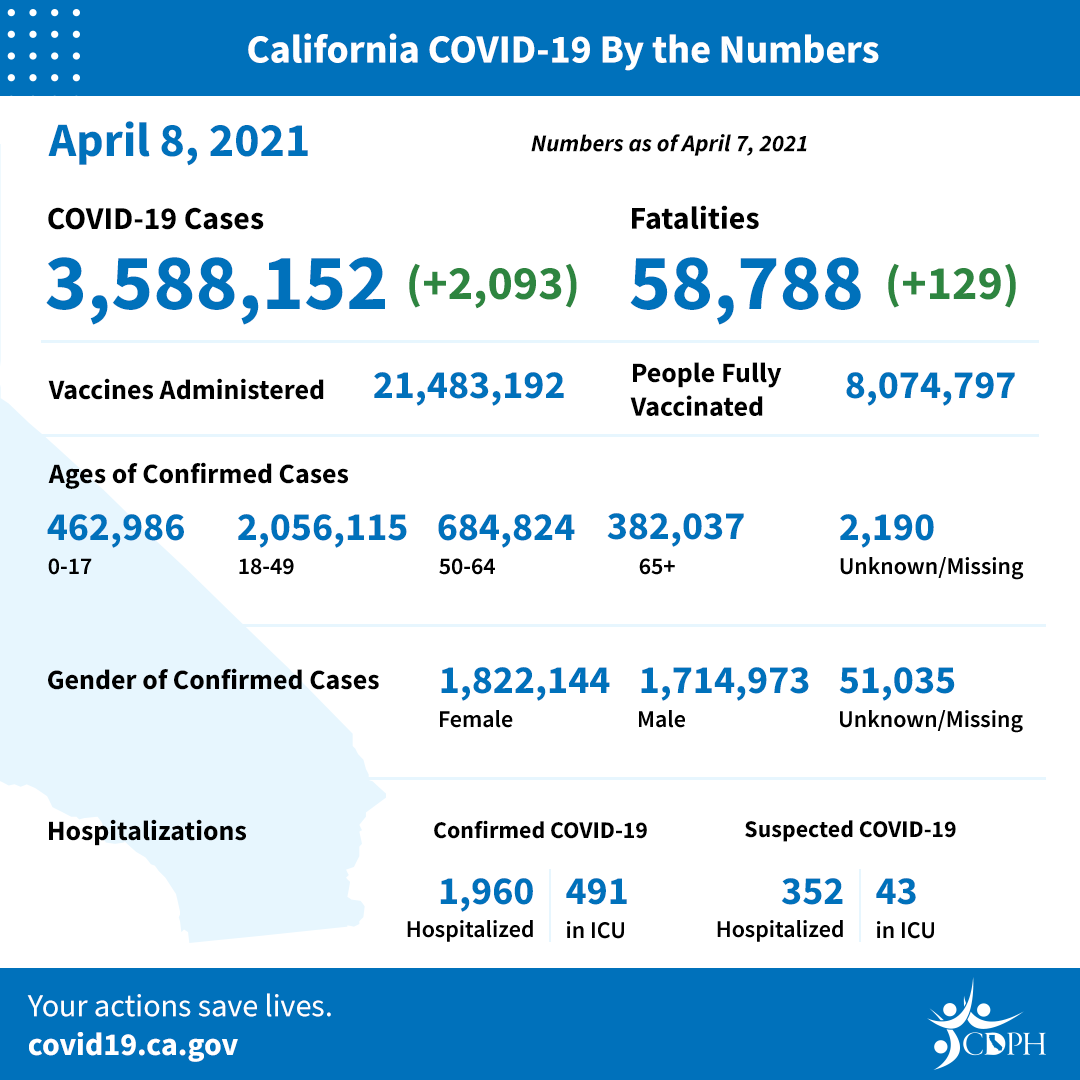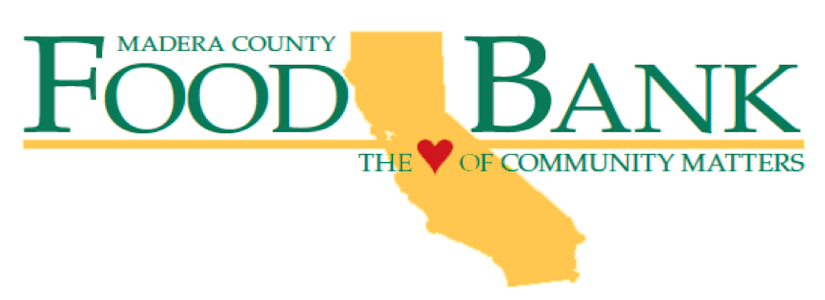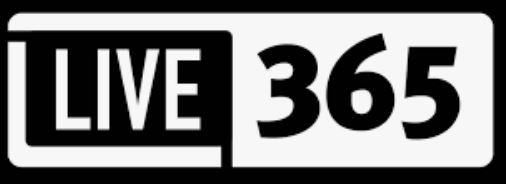 SACRAMENTO - Ahead of expanded eligibility for the COVID-19 vaccine on April 15 for all Californians aged 16+, the California Department of Public Health (CDPH) is rolling out tailored outreach for Black and African American communities across the state. This latest element of the "Let's Get to ImmUnity" public education campaign is part of the state's overall Vaccinate ALL 58 effort.
SACRAMENTO - Ahead of expanded eligibility for the COVID-19 vaccine on April 15 for all Californians aged 16+, the California Department of Public Health (CDPH) is rolling out tailored outreach for Black and African American communities across the state. This latest element of the "Let's Get to ImmUnity" public education campaign is part of the state's overall Vaccinate ALL 58 effort.
The "Let's Get to ImmUnity" integrated media campaign launched statewide in early March as part of a broader $40 million effort to offer answers and reassurance that COVID-19 vaccines are safe, effective, and our greatest tool to end the pandemic. With the help of radio, print, social media, TV, and billboard advertisements, the campaign aims to reach all Californians, with a focus on multicultural and multilingual media outlets. The campaign will connect with the Black and African American community by taking a listening-first approach to understanding their unique concerns, partnering with trusted Black and African American leaders, and using culturally resonant content.
“Data shows that COVID-19 disproportionately impacts Black and African American communities in terms of severity, mortality, and economics. These communities are also being vaccinated at disproportionately low rates,” said Tomás Aragón, CDPH Director and State Public Health Officer. “We designed this campaign to speak to the understandable, culturally-specific concerns and questions surrounding the vaccine of Black and African American communities.”
In the 30-second TV spot “Darius,” the campaign’s purpose comes to life via a simple Q&A conversation between Darius, an African American photographer from East Palo Alto, California, and Dr. Nadine Burke Harris, the California Surgeon General.
In addition to traditional communication channels, the campaign will also meet people where they are via community engagement efforts throughout the state. These efforts will begin in Oakland, where the campaign will partner with small businesses and community leaders serving the local Black and African American community to increase awareness of the safety and efficacy of the vaccines and mobilize community members to get vaccinated. The campaign will take a ground-up approach to these efforts providing informational materials that can be displayed in stores, shared with customers, or amplified on social channels. Community engagement efforts will expand to Black and African American communities across the state as the campaign continues and will remain focused on increasing vaccine equity.
The "Let's Get to ImmUnity" campaign is placing additional focus on geographic areas in the bottom quarter of the Healthy Places Index (HPI), mirroring the state's announcement last month to increase vaccine supply in these communities. The public education campaign is an important part in the state's five-part plan for equitable vaccine administration. Other parts of the plan include:
- Increasing the state's vaccine supply allocated to the lowest 25 percent of ZIP codes based on the Public Health Alliance of Southern California's HPI, and reserving appointments for priority populations through My Turn.
- Creating a Statewide Vaccine Network with a Third Party Administrator (TPA) to include appropriate access in disproportionately impacted communities and supplements this access with evening/extended hours, transportation services, translation services, home-bound services, mobile vaccine services, and physical accessibility features at vaccination events, for example.
- Leveraging the work Community-Based Organizations (CBOs) have been doing to provide critical services and information to Californians during the pandemic.
- Establishing the My Turn vaccine appointment and eligibility notification platform as a cornerstone of the state's vaccine data analytics efforts to understand the demographics of vaccine recipients.
------------
Today the state updated the Blueprint for a Safer Economy, outlining that the weekly tier assessment will consider both a county’s adjusted case rate and test positivity, as well as hospitalization data, in determining whether a county should remain in a less restrictive tier. If CDPH determines there are objective signs of stability or improvement in the data, the county may remain in the less restrictive tier. Unless there are extenuating circumstances, such as a low rate of vaccine take up, a county will only move to a more restrictive tier if hospitalizations are increasing significantly among vulnerable individuals, especially among vaccinated individuals, and both test positivity and adjusted case rates show a concerning increase in transmission.
Statewide COVID-19 Data as of Today
-
California has 3,588,152 confirmed cases to date. Numbers may not represent true day-over-day change as reporting of test results can be delayed.
-
There were 2,093 newly recorded confirmed cases Wednesday.
-
The 7-day positivity rate is 1.9%.
-
There have been 55,610,191 tests conducted in California. This represents an increase of 126,557 during the prior 24-hour reporting period.
-
There have been 58,788 COVID-19 deaths since the start of the pandemic.
-
As of April 8, providers have reported administering a total of 21,483,192 vaccine doses statewide. The CDC reports that 26,966,680 doses have been delivered to entities within the state. Numbers do not represent true day-to-day change as reporting may be delayed. For more vaccination data, visit the COVID-19 Vaccine Data Dashboard. Note: As part of an ongoing statewide vaccination data and integrity initiative, approximately 400,000 vaccines were added to the data after the regular morning daily update on April 7. These doses represent a number of records that were corrected by providers but not previously counted between March 11 and April 6, 2021.

Vaccine Eligibility Update
With a supply of vaccines expected to significantly increase in the coming weeks, the state is expanding vaccine eligibility to more Californians. As of April 1, individuals aged 50+ are eligible to make an appointment, and individuals 16+ will be eligible to make an appointment to be vaccinated starting on April 15. To sign up for a notification when you're eligible for a vaccine, please visit myturn.ca.gov. For more information on the vaccine effort, visit Vaccinate All 58.
Tracking Variants
Multiple variants of the virus that causes COVID-19 have been identified globally during the COVID-19 pandemic. These genetic mutations are expected, and some emerge and then disappear, while others persist or become common. Most variants do not have a meaningful impact. Public health becomes concerned about a variant when it affects COVID-19 transmission, severity, testing, treatment or vaccine effectiveness. Get more information on the variants CDPH is currently monitoring.
Blueprint for a Safer Economy
All counties are under the rules and framework of the Blueprint for a Safer Economy and color-coded tiers that indicate which activities and businesses are open based on local case rates and test positivity. As always, local public health departments may implement policies that are more restrictive than the state.
Blueprint Summary (as of April 6)
- 2 counties in the Purple (widespread) Tier
- 22 counties in the Red (substantial) Tier
- 32 counties in Orange (moderate) Tier
- 2 county in the Yellow (minimal) Tier
Blueprint tiers are updated weekly on Tuesdays. Find the status of activities in specific counties.
ADDITIONAL DATA & UPDATES
Safe Schools for AllGovernor Gavin Newsom launched the Safe Schools for All Hub as a one-stop-shop for information about safe in-person instruction. The state has updated its schools reopening maps to include outbreak data by the school district. View the data for public schools by selecting a specific district on the School Districts Reopening Map. The map includes reported outbreaks since January 1, 2021.
Travel Advisory Updated
California updated its travel advisory on April 1, removing the previous recommendation that Californians not travel more than 120 miles from ones' place of residence. Postponing travel and staying home is the best way to protect yourself and others from COVID-19, and Californians should continue to avoid non-essential travel outside of the state. Non-essential travelers from other states or countries are strongly discouraged from entering California and should follow CDC travel guidance related to testing and self-quarantine.
Health Care Workers
As of April 7, local health departments have reported 103,952 confirmed positive cases in health care workers and 444 deaths statewide.
Testing Turnaround Time
The testing turnaround time dashboard reports how long California patients are waiting for COVID-19 test results. During the week of March 21 to March 27, the average time patients waited for test results was just under one day. During this same time period, 83% of patients received test results in one day and 98% received them within two days.
Multisystem Inflammatory Syndrome in Children (MIS-C)
As of April 6, there have been 448 cases of Multisystem Inflammatory Syndrome in Children (MIS-C) reported statewide. MIS-C is a rare inflammatory condition associated with COVID-19 that can damage multiple organ systems. MIS-C can require hospitalization and be life-threatening.
Your Actions Save Lives
Protect yourself, family, friends, and your community by following these prevention measures:
- If you are experiencing symptoms of COVID-19 (fever, cough, shortness of breath, fatigue, muscle or body aches), call your health care provider.
- If you believe you have been exposed, get tested. Free, confidential testing is available statewide.
- Get vaccinated when it's your turn.
- Limit interactions to people who live in your household and follow state and local public health guidance.
- Wear a mask and get the most out of masking - an effective mask has both a good fit and good filtration.
- Avoid non-essential travel and stay close to home; self-quarantine for 10 days after arrival if you leave the state.
- Wash hands with soap and water for at least 20 seconds.
- Avoid close contact with people who are sick and stay home from work, school, and other people if you feel ill.
- Add your phone to the fight by signing up for COVID-19 exposure notifications from CA Notify.
- Answer the call or text if a contact tracer from the CA COVID Team or your local health department tries to connect.














































